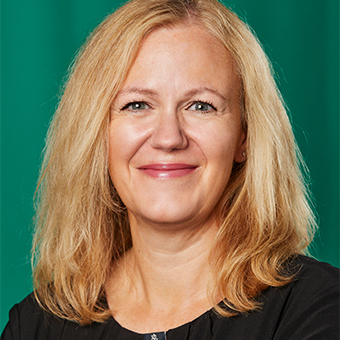For the network of the future
Use of the flexQgrid project for a sustainable power supply
Research focus: Smart Systems and Infrastructures
A sustainable energy supply needs smart power grids: Funded by the German Federal Ministry of Economic Affairs and Climate Action since November 2019, the flexQgrid project thus set itself the task of developing innovative solutions for a power grid of tomorrow that is ready for the household of the future. At the end of April, the final hybrid public meeting took place with 400 online and 80 in-person attendees in which the findings of the flexQgrid project were presented. These were also revealed through a 17-month field test in the southern Baden municipality of Freiamt.
Our energy system is becoming increasingly complex and dynamic, as both energy generation and consumption are undergoing structural change. For example, the number of smaller, decentralized energy generation plants is increasing and replacing large-scale power plants. And on the consumer side, there is a shift toward prosumer households (composed of producer and consumer), in which electrical consumption is dominated by an ever-increasing number of e-vehicles and heat pumps. Battery storage systems are being used to shift locally generated photovoltaic (PV) power to times when there is no PV power generation.
This leads to new challenges, particularly in the electricity distribution networks, in order to reliably transport large PV surpluses in summer or the large electrical loads caused by heat pumps and e-vehicles in winter. Here, supply security can be jeopardized by grid bottlenecks due to overloaded lines and transformers; even decentralized plants may then have to be briefly idled or shut down.
Intelligent smart grid technologies
In the flexQgrid research project, the FZI, together with nine project partners from grid operation, industry and science, studied the use of intelligent smart grid technologies.
Prosumer households help keep the power distribution grid stable and avoid overloads by intelligently coordinating generation and consumption systems. To this end, the plants in use must be able to be flexibly adapted by means of control.
Optimal coordination through net traffic light
In the project, a quota-based grid traffic light with classic three light phases served as an instrument for optimal use and coordination of these flexibilities. It makes the grid status transparent for grid operators, market participants, and customers and – in times of congestion or predicted congestion – ensures that the building energy management systems (BEMS) of prosumer households receive signals to control the systems in a demand-oriented and automated manner, with the goal of avoiding or resolving a grid bottleneck. The FZI was responsible for the development of the BEMS as a key component in the project.
The network traffic light concept works as follows: If the distribution network operator (DNO) forecasts a congestion of the power distribution network, the grid traffic light jumps to yellow. Now, with the help of a developed quota model, BEMS reliably ensures that prosumer households adjust their power at the grid access point (GSAP) according to a quota specified by the DNO. If the predicted congestion can nevertheless not be eliminated and results in actual congestion, the network traffic light enters its red phase. After that, the distribution network operator temporarily communicates a power setpoint for the grid connection point, which is reliably met by the prosumer households through the BEMS.
To determine the traffic light phase, the BEMS regularly communicates the forecast load profile and the energy flexibility of the prosumer household to the network operator via smart metering systems and a control box standardized by the VDE FNN. On this basis, the network operator can calculate how much the network will be used in the next few hours and recognize whether a network overload is imminent and switch the network traffic light to yellow instead. To achieve the transmitted quota, the BEMS controls the energy systems in the household so that the power at the GSAP corresponds to the quota. For example, the charging power of an electric vehicle charging process is temporarily reduced for this purpose – or the local power demand of the household is covered by the battery storage instead of the grid.
Avoiding grid bottlenecks through intelligent building energy management systems
The project was able to demonstrate that flexible prosumer households can make a major contribution to avoiding and resolving grid bottlenecks in distribution grids using a smart BEMS. In addition, valuable insights were gained into the design and further development of the regulatory framework, such as the implementation of Section 14a from the Energy Industry Act (EnWG) for the integration of controllable consumer devices and grid connections.
Plus point in the flexQgrid project: Seventeen months of field testing in Freiamt in southern Baden
A particular plus point in the flexQgrid project was the direct testing of the technological advancements in a 17-month field test in the southern Baden municipality of Freiamt. The field test included 23 prosumer households in real grid operation with over 60 different installations connected and controlled by the BEMS, such as inverters of PV system, battery storage, charging station for electric vehicles and heat pump. The field test also relied on a lively exchange of experiences with the citizens of the town, where – also due to earlier successful projects – there is already a positive mood towards energy.
flexQgrid project partners
Web links

